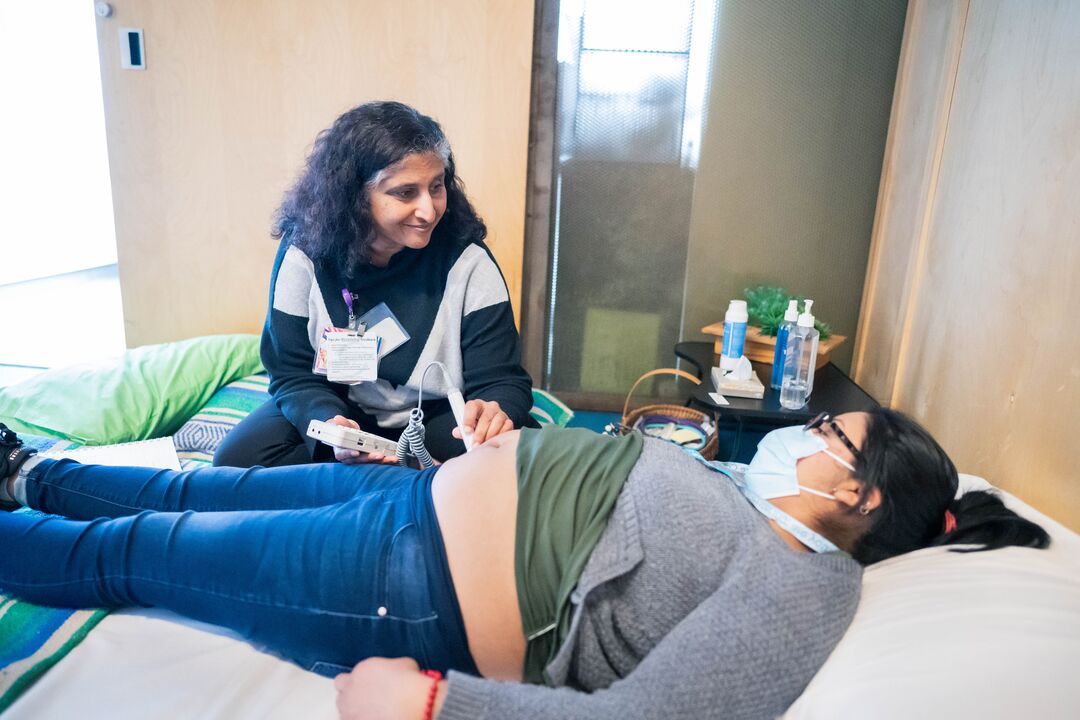 Postpartum health is in crisis in the United States, with rising pregnancy-related deaths and worsening racial inequities.
Postpartum health is in crisis in the United States, with rising pregnancy-related deaths and worsening racial inequities.
The World Health Organization recommends four postpartum visits during the six weeks after childbirth, yet standard care in the US is only one visit. Given that more than half of pregnancy-related deaths happen one week or more after birth, improving postpartum care is key.
New research from Ariana Thompson-Lastad and colleagues uses interviews with Certified Professional Midwives and Certified Nurse Midwives who provide care in birth centers and home settings in California and Oregon to describe six key elements of the community midwifery model of postpartum care. State licensing boards determine midwives' scope of practice, which varies by state. In CA and OR, the scope of practice is more limited for CPMs than CNMs.
- Multiple postpartum visits. Nearly all midwives reported a standard visit schedule of 5-8 visits during the first six weeks postpartum, with additional contact as needed by phone, text or email.
- Care for the parent and infant. The community midwifery model involves caring for birthing parents and their babies as a unit. They typically provide care for both until six weeks postpartum, unless specific complications require transferring to pediatric, obstetric or specialty care.
- Continuity of personalized care. Community midwifery care typically includes continuity of care from the start of prenatal care through six weeks postpartum. Midwives shared that this continuity helps early identification of complications, supports client engagement in preventive care, and eases referral for additional treatment when needed.
- Relationship-centered care. Community midwives describe care they provide as relationship-centered, with a focus on the relationship between the midwife and the person giving birth, as well as the birthing person and their family and close community members.
- Planning and preparation. Community midwives’ care involves planning and preparation for the postpartum period, beginning during pregnancy. This includes planning for social and practical support for extended family and friends.
- Focus on postpartum rest. Community midwives generally advise that birthing parents practice what they call “deep rest,” in contrast to the common ideology in the US that women should “bounce back.”
In the US, the postpartum phase is not adequately supported, despite it being the highest-risk period for pregnancy-related health complications. Health care for postpartum families must focus on this period to improve maternal and infant health, increase breastfeeding rates, and address postpartum mental health.
The community midwifery model in the US is a comprehensive model on postpartum care, and increasing access to it is one pathway toward health equity during and after pregnancy. In light of widening, persistent, and unconscionable inequities in US reproductive health, there is an urgent need for midwives to be licensed in all states and appropriately compensated for the care they provide, reducing barriers to the expansion and accessibility of community midwifery.
I think one of the worst things that's happened in our healthcare system is the separation of birthing parents and babies. They…function as a physiologic and social whole for a while after birth. They have been one entity during pregnancy, and it takes a while to separate that out. So, I think when there are well baby visits and maternal postpartum visits and they're separated out, almost all of the problems that I see people having in the postpartum are related.
Jane
Certified Professional Midwife

